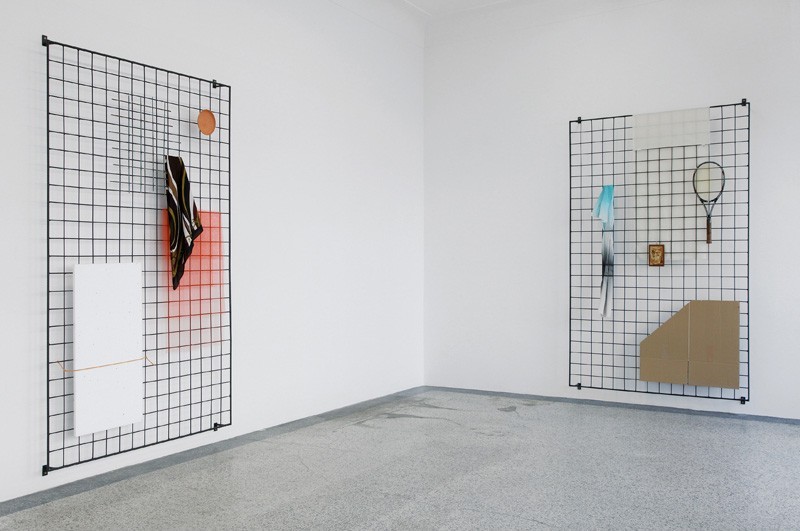Eva Berendes
08 Jun - 20 Jul 2013
EVA BERENDES
The Near Serendipitous Encounter
8 June – 20 July 2013
We're looking forward to the first solo exhibition by Eva Berendes at VAN HORN, in which she is showing her latest works from the series GRIDS.
Large-format grid surfaces assembled with everyday objects, such as polystyrene-panels, ornamental plates, bin bags or coloured fabrics, - they are all objects and findings that lose their original function within their new array and they enter into relationships with each other in front of the raster.
What seems spontaneously arranged at first, involves comprehensive considerations: it is apparent that Berendes follows specific principals in terms of selection and assembly, when she consequently shifts between transparency and opacity, between static and smoothly falling materials. Her pictorial objects allude to two painterly traditions: vases, fabrics and foral ornaments refer to still life painting, while the circles, rectangles and triangles employ the visual language of non-representational art.
Within their two-dimensionality, the hand welded grids provide virtually infinite possibilities for the artistic arrangements and due to their neutrality, they become an arena in which the image can take place. "The development of the scenery on the grid-images performs a constant regrouping of the objects upon the carrier structure."1 The choice of materials becomes an expansion of the artistic process and the composition of the objects turns into a balancing act, in which every newly added object can change the entire framework. Berendes' Grids are situated along the boundary between two- and three-dimensional objects - they take up real space, but simultaneoulsy, they always remain an image.
The Near Serendipitous Encounter
8 June – 20 July 2013
We're looking forward to the first solo exhibition by Eva Berendes at VAN HORN, in which she is showing her latest works from the series GRIDS.
Large-format grid surfaces assembled with everyday objects, such as polystyrene-panels, ornamental plates, bin bags or coloured fabrics, - they are all objects and findings that lose their original function within their new array and they enter into relationships with each other in front of the raster.
What seems spontaneously arranged at first, involves comprehensive considerations: it is apparent that Berendes follows specific principals in terms of selection and assembly, when she consequently shifts between transparency and opacity, between static and smoothly falling materials. Her pictorial objects allude to two painterly traditions: vases, fabrics and foral ornaments refer to still life painting, while the circles, rectangles and triangles employ the visual language of non-representational art.
Within their two-dimensionality, the hand welded grids provide virtually infinite possibilities for the artistic arrangements and due to their neutrality, they become an arena in which the image can take place. "The development of the scenery on the grid-images performs a constant regrouping of the objects upon the carrier structure."1 The choice of materials becomes an expansion of the artistic process and the composition of the objects turns into a balancing act, in which every newly added object can change the entire framework. Berendes' Grids are situated along the boundary between two- and three-dimensional objects - they take up real space, but simultaneoulsy, they always remain an image.

